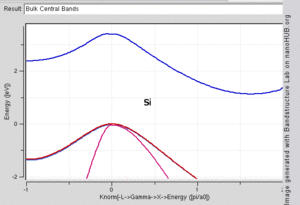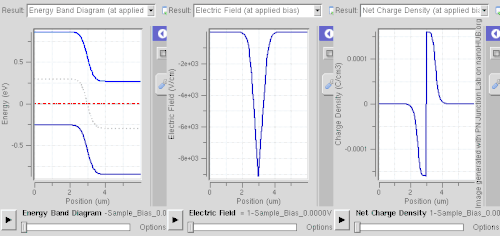Does doping affect the number of band states?
Physics Asked on February 28, 2021
Does doping a semiconductor with acceptor impurities affect the number of states in the valence and conduction bands? How about doping with donor impurities?
It seems to me, that in the former case the answer should be yes, adding acceptors should decrease the number of band states while in the latter I think the answer should be no. The donor impurities add electrons to the system as well as new levels inside the gap, while the accpetor impurities decrease the number of electrons and convert some of the band states into acceptor states inside the gap. In this way, at zero temperature we always have all valence band states full and all conduction band states empty. Otheriwise, we would end up with conduction electrons or holes present even in the ground state. I am not sure however if this is correct.
One Answer
In general, doping a semiconductor with impurities affect the number of states in the valence and conduction bands. The type of impurities determine the band (valence/conduction) and the number of states.
The following is taken from wikipedia's Doping and Boron
Doping a semiconductor in a good crystal introduces allowed energy states within the band gap, but very close to the energy band that corresponds to the dopant type. In other words, electron donor impurities create states near the conduction band while electron acceptor impurities create states near the valence band. The gap between these energy states and the nearest energy band is usually referred to as dopant-site bonding energy or EB and is relatively small. For example, the EB for boron in silicon bulk is 0.045 eV, compared with silicon's band gap of about 1.12 eV. Because EB is so small, room temperature is hot enough to thermally ionize practically all of the dopant atoms and create free charge carriers in the conduction or valence bands.
Boron is a useful dopant for such semiconductors as silicon, germanium, and silicon carbide. Having one fewer valence electron than the host atom, it donates a hole resulting in p-type conductivity.
Answered by Peter Darmis on February 28, 2021
Add your own answers!
Ask a Question
Get help from others!
Recent Answers
- haakon.io on Why fry rice before boiling?
- Jon Church on Why fry rice before boiling?
- Peter Machado on Why fry rice before boiling?
- Joshua Engel on Why fry rice before boiling?
- Lex on Does Google Analytics track 404 page responses as valid page views?
Recent Questions
- How can I transform graph image into a tikzpicture LaTeX code?
- How Do I Get The Ifruit App Off Of Gta 5 / Grand Theft Auto 5
- Iv’e designed a space elevator using a series of lasers. do you know anybody i could submit the designs too that could manufacture the concept and put it to use
- Need help finding a book. Female OP protagonist, magic
- Why is the WWF pending games (“Your turn”) area replaced w/ a column of “Bonus & Reward”gift boxes?

